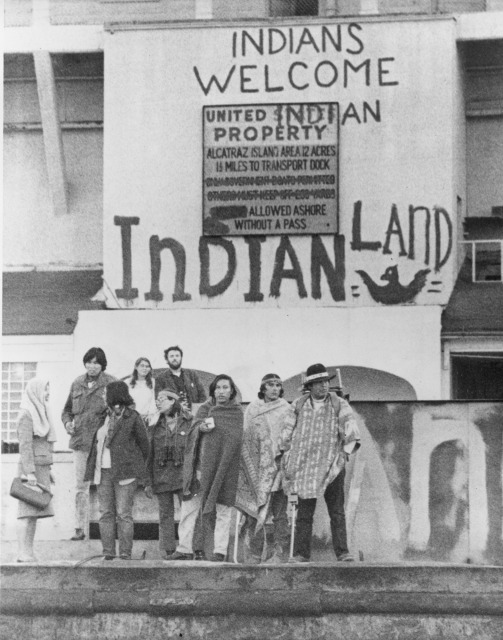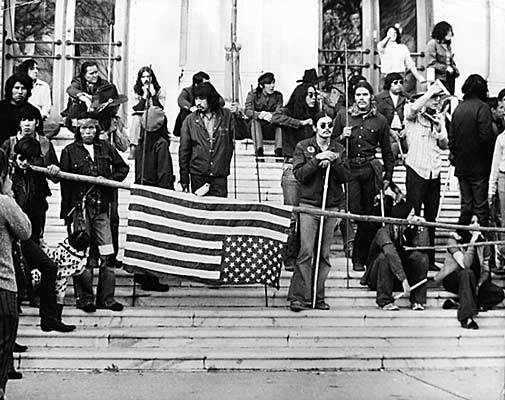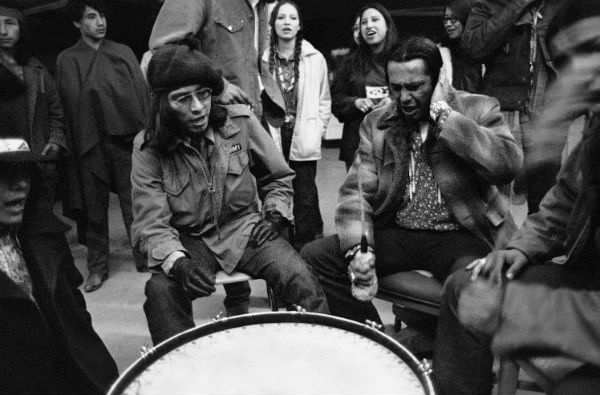What Issues Prompted the Native American Civil Rights Movement
Moore Paul Meek Library for the seventh annual Civil Rights Conference held at the University of Tennessee at Martin February 26-March 3 2007. The Native rights movement was intended to accomplish two goals.

American Indian Movement Civil Rights Digital History Project Exhibits
This group believed the tribal governments organized under the IRA 1934 were not.

. What issues prompted the native american civil rights movement. The issues that prompted the Native American Civil Rights movement stemmed from the mistreatment of Native Americans. The issues that prompted the Native American Civil Rights Movement were the recognition of treaty rights and the American self-government.
Which of the following was a major outcome of european imperialism in africa after the industrial revolution. A typical example of the struggle faced involved the Seneca Nation of New York State. After the many civil rights movements that took place in the 60s and after seeing the success of them many other miniorities whose rights had been ignored and diminished over the years arose to protest for their own rights The Native American Civil Rights Movement asked for a recognition of their right to self governate themselves and the.
The pursuit of civil rights for Black Americans was also inspired by the traditional promise of American democracy. What issues prompted the Native American Civil Rights Movement. Classification numbers for materials available at the Paul Meek Library follow entries in bold.
The Native American Civil Rights Movement was prompted by inequality and poor treatment of minority groups in the US. They were forced to live on reservations and also did not have the right to. American Indian Movement AIM 1968.
Africans in the belgian congo suffered forced labor and oppression o c. The Catalyst of the American Indian Movement. Conditions facing migrant farm laborers the recognition of treaty rights Native American self-government one person one vote The recognition of treaty rights issues prompted the.
CONTEMPORARY NATIVE AMERICAN CIVIL RIGHTS. The area around the suez canal experienced decades of military conflict o b. Lay out the background of discrimination versus Indigenous AmericansDescribe the development of Indigenous American civil liberties from 1960 to 1990Discuss the perseverance of issues Indigenous Americans encounter today.
A SELECTIVE BIBLIOGRAPHY Earlene J. Creates New Deal programs to employ natives and conserve Indian lands. Recognition of treaty rights.
The discovery of rich matural resources led to african economic prosperity. Under President FDR John Collier appointed as commissioner of Indian Affairs. The Red Power movement took a confrontational and civil disobedience approach to inciting change in United States to Native American affairs 2 compared to using negotiations and settlements which national Native American groups such as National Congress of American Indians had before.
The civil rights movement is a legacy of more than 400 years of American history in which slavery racism white supremacy and discrimination were central to the social economic and political development of the United States. The American Indian Movement AIM was primarily urban Indians who believed that direct and militant confrontation with the US government was the only way to redress historical grievances and to gain contemporary civil rights. On the one hand to achieve the civil rights of Native peoples as American citizens and on the other hand the sovereign rights of Native nations.
What issues prompted the native american civil rights movement. Previously believed to avoid protests American Indians disproved this stereotype at the occupation of Alcatraz starting in November of 1969. What issues prompted the Native American Civil Rights Movement2 answers More opportunities for American Indians Right to self-government.
One of the major issues surrounding land ownership rights of the Native American Nations is the purposes for which they are and are not allowed to use their land. The dynamic movements of the 1960s-1970s gained momentum as several causes came to the forefront following the Civil Rights Movement.

American Indian Movement Civil Rights Digital History Project Exhibits

The Radical History Of The Red Power Movement S Fight For Native American Sovereignty

Occupy Wounded Knee A 71 Day Siege And A Forgotten Civil Rights Movement The Atlantic
Comments
Post a Comment